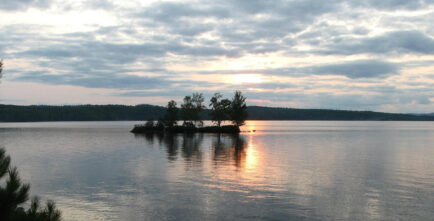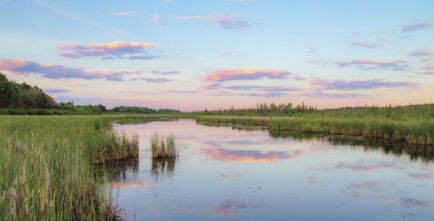About CPAWS Ottawa Valley
Who we are
CPAWS-OV continues to be the voice for wilderness and everyone who benefits from having healthy green spaces in the Ottawa Valley. Established in 1969 by concerned citizens inspired to care for the Gatineau Park, we have stayed true to our roots, advocating for stronger environmental protection laws, helping to establish and expand protected areas and getting people involved with looking after nature at their doorstep. Thanks to our hard work, we have helped protect over 8,700 square Kilometers of land in the Ottawa River watershed, an area larger than Prince Edward Island!
Today, we are also working to support the federal and provincial pledges to protect 30% of our lands and waters by 2030, looking out for our rarer habitats, such as old growth forests, in most need of protection.
Going beyond, our vision is for at least 50% of our remaining wilderness in the Ottawa Valley be permanently protected to sustain nature and people for many generations to come.

What we do
At CPAWS-OV, we are working towards a healthy and resilient ecosphere where people can experience the many benefits of natural ecosystems equipped with the knowledge of how to respect and protect it. We will achieve this by:
- protecting Canada’s wild ecosystems in parks and other wild spaces, preserving the full diversity of habitats and the many species found within;
- promoting awareness and understanding of ecological principles and the inherent values of wilderness through education, appreciation and experience;
- encouraging individual action and a sense of community in working together to accomplish these goals;
- working co-operatively with government, First Nations, business, other organizations and individuals in a consensus-seeking manner, wherever possible.
CPAWS-OV believes that by ensuring the health of the parts, we ensure the health of the whole, which is our health too.
Where we work
CPAWS Ottawa Valley (CPAWS-OV) is your voice for wilderness in Eastern Ontario and Western Quebec. From the Algonquin Park to Rigaud, from Maniwaki through Gatineau Park and down to Perth, we care for the Ottawa River watershed with its many rich and varied habitats. We seek consensus and work collaboratively with Indigenous communities, Crown corporations, the tourism sector and communities across the region to promote the conservation and sound management of our rich natural resources and public lands.
Our priorities are:

PROTECTED AREAS
The establishment of new parks and other protected areas, supporting national and provincial commitments to set aside more areas for conservation.

EFFECTIVE MANAGEMENT
To ensure that current protected areas are managed first and foremost to ensure ecological integrity.

BRIDGE AND PROTECT
To identify, define and ultimately protect important natural corridors that exist between parks and protected areas to support the continued movement of species, both as part of normal lifecycles, but also in response to climate change.

AMPLIFY COMMUNITY CONNECTIONS
To connect Canadians, particularly children and youth, to nature through education and stewardship programs designed to build and foster a lifelong appreciation for nature.
Partnership projects
Collaboration makes us stronger! We take part in many collaborative projects with other organisations in the area. Here are a few we are working on currently:
Kidjimaninan Project
CPAWS-OV is part of the technical committee for the biodiversity project led by Kitigan Zibi and is responsible for the subcommittee focused on public lands.
Click here for more information
Working Group for Ecological Corridors in Outaouais
Several environmental stakeholders in the region are coming together to discuss issues related to ecological corridors in Outaouais. CPAWS-OV is part of this group.
Protection of Meech Creek
Residents of Chelsea want the municipality to recognize the shores of Meech Creek as an important ecological corridor for local wildlife. SNAP-VO provides expert support by sharing its biodiversity protection knowledge to help residents achieve their goal.
Ways to help CPAWS-OV
How you can help
CPAWS-OV is always looking for volunteers to help us achieve our conservation goals. If you’d like to volunteer with us, let us know!
Get the word out! Follow us on Facebook and Instagram and share our content to your friends and family.
Subscribe to our newsletter to stay in the know about events, programs and other opportunities to get involved.






